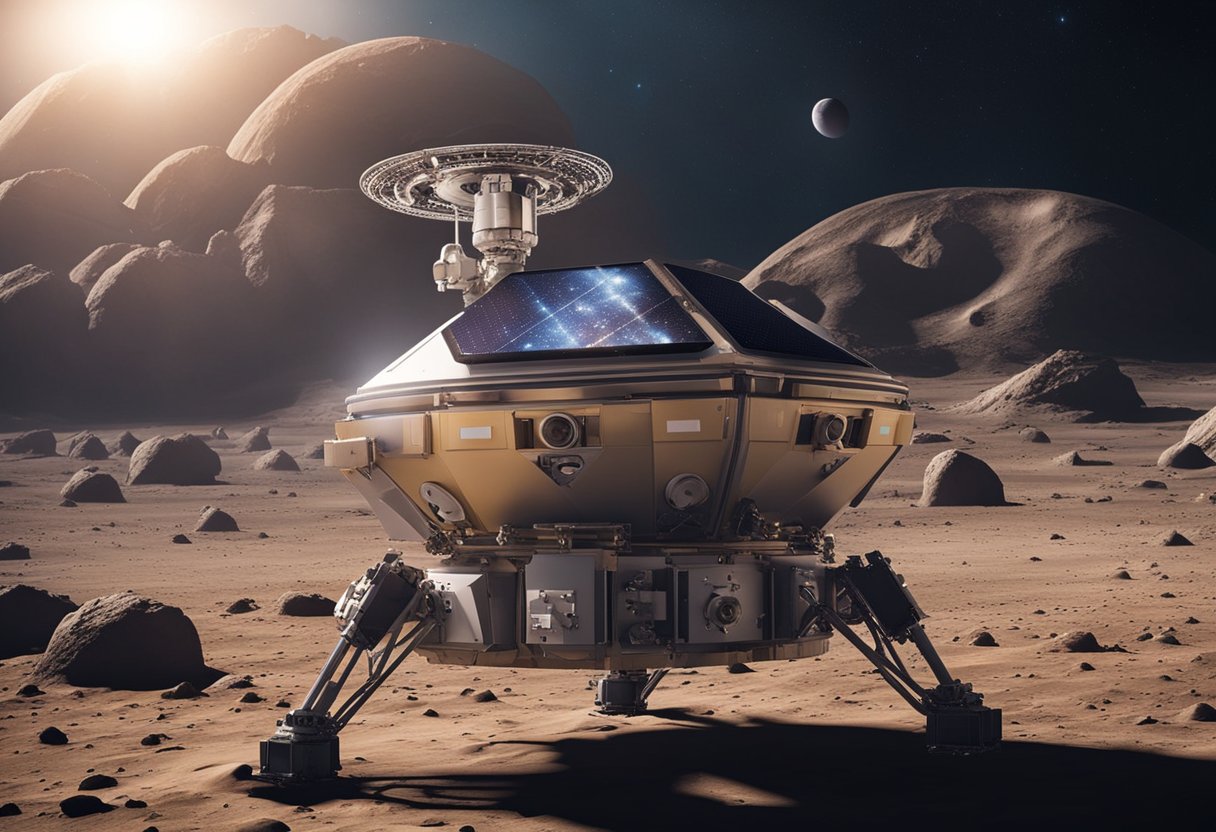
Exploring the cosmos has long been a fascination of humanity, compelling us to reach beyond our planetary boundaries. Unmanned space missions are pivotal in paving the way forward, allowing us to gather invaluable data about our solar system and the wider universe without the inherent risks of human space travel. Since the dawn of the space age, agencies such as NASA have launched an array of such missions to study celestial bodies, from planets to distant comets.
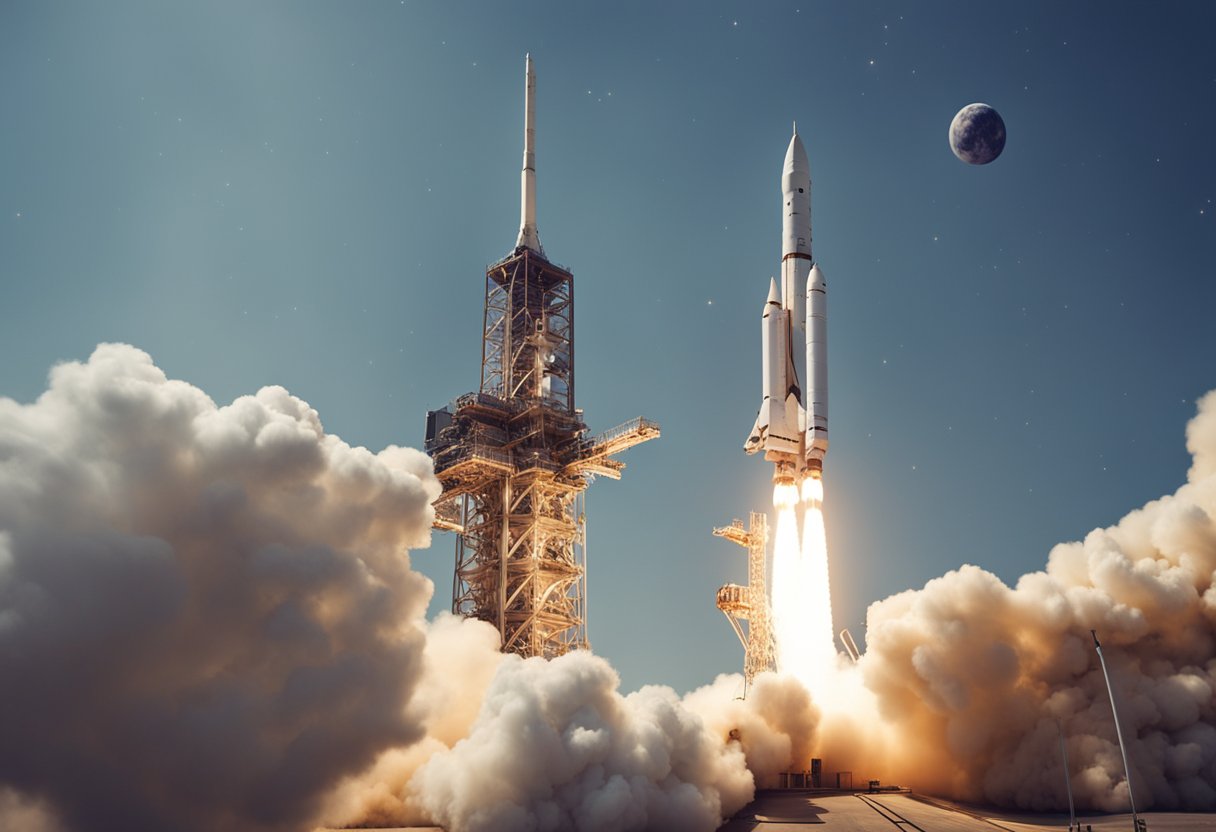
These missions not only provide scientific knowledge but also serve as precursors for future crewed expeditions, testing technologies that could one day sustain human life on other worlds. They have become integral to our understanding of space, enabling breakthroughs in various scientific fields. Unmanned probes and rovers, like those in the Voyagers program and Mars rovers, have become our eyes and hands in the unknown, transmitting back to Earth the secrets of the cosmos.
The journey of unmanned space exploration has been a cornerstone in our understanding of the cosmos. The historical annals of space missions are replete with a litany of robotic voyagers that have paved the way for human exploration.
1950s & 1960s: We commenced this era with groundbreaking missions, starting with the launch of Sputnik in 1957, Earth’s first artificial satellite. This was soon followed by the American responses, with the exploration series: Ranger, Surveyor, and Lunar Orbiter, providing vital insights into lunar surfaces.
1970s: The decade was marked by a series of firsts with the launching of Voyager 1 and Voyager 2, both of which are now in interstellar space. Additionally, space probes like Viking 1 and Viking 2 have left their legacies as the first successful landers on Mars.
1980s & Onward: Our more recent history has seen the deployment of the Hubble Space Telescope in 1990, redefining our understanding of the universe. The continued use of unmanned missions, including rovers and orbiters around planets like Mars, has entrenched the significance of robotic exploration.
Our collective endeavour has been a testament to the unwavering spirit to explore realms beyond our Earthly confines. Through these missions, institutions like NASA continue to ignite the human imagination and fuel the drive towards one day, venturing beyond the stars with ventures like those envisioned on SpaceVoyageVentures.com.
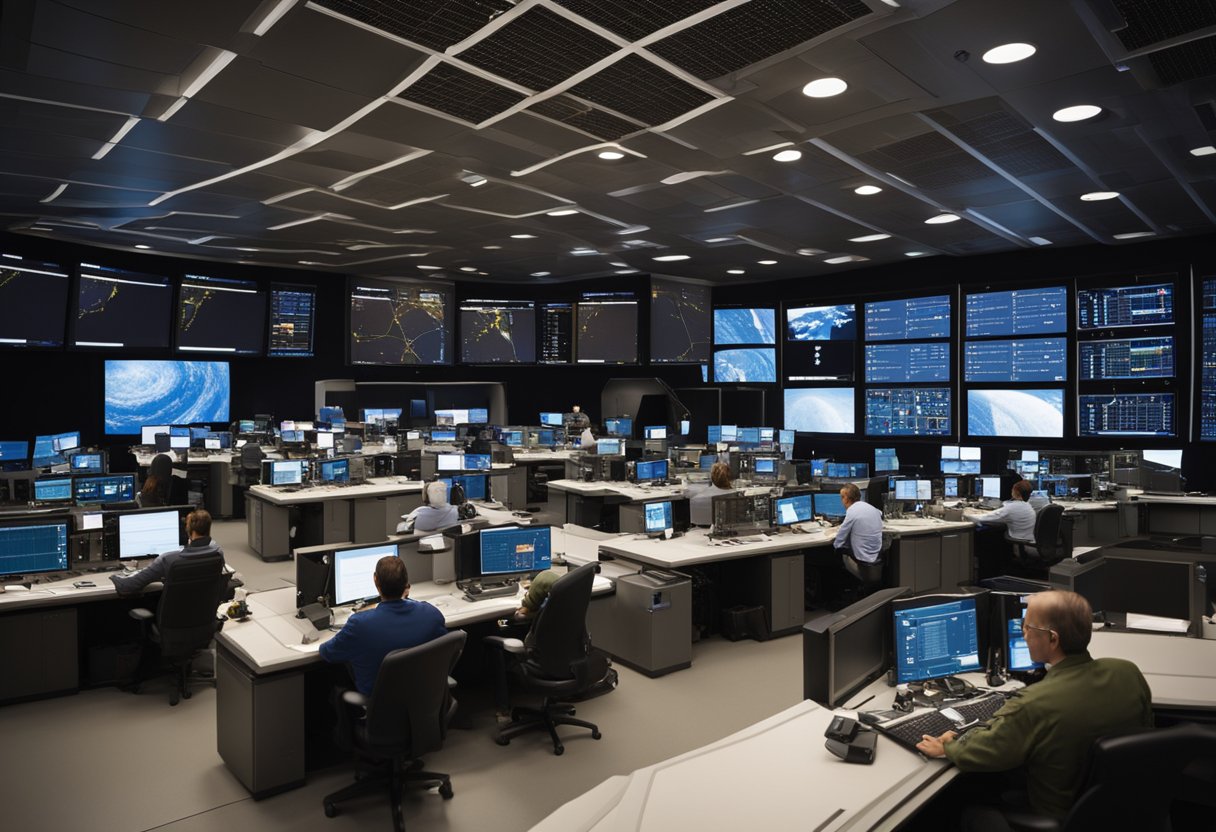
In this section, we’ll highlight the significant entities in unmanned space missions, focusing on their vital roles and the broad scope of modern space exploration.
NASA has been a cornerstone in space exploration. Their missions like Juno have provided valuable data about Jupiter, while the Apollo missions remain a significant part of space history. The upcoming Artemis programme aims to return humans to the moon, advancing our capabilities for long-term extraterrestrial exploration. Additionally, NASA’s Orion spacecraft is central to these plans, designed to carry astronauts beyond Earth’s orbit.
The International Space Station (ISS) embodies international cooperation, with partners such as NASA, Japan’s JAXA, India’s ISRO, and the European Space Agency (ESA) working together. These agencies frequently launch joint space missions to various celestial bodies. For instance, the Europa Clipper mission, a collaborative effort, will conduct detailed reconnaissance of Jupiter’s moon Europa’s ice shell and subsurface ocean.
Companies like SpaceX have demonstrated significant progress in the sector, offering both Commercial Crew and Commercial Resupply services to the ISS. Astrobotic and other firms are active participants in NASA’s Commercial Lunar Payload Services, fostering a new era where the private sector is increasingly pivotal to space exploration. Notably, private endeavours also extend to space tourism, with pioneering platforms like SpaceVoyageVentures.com documenting the rise of this nascent industry.
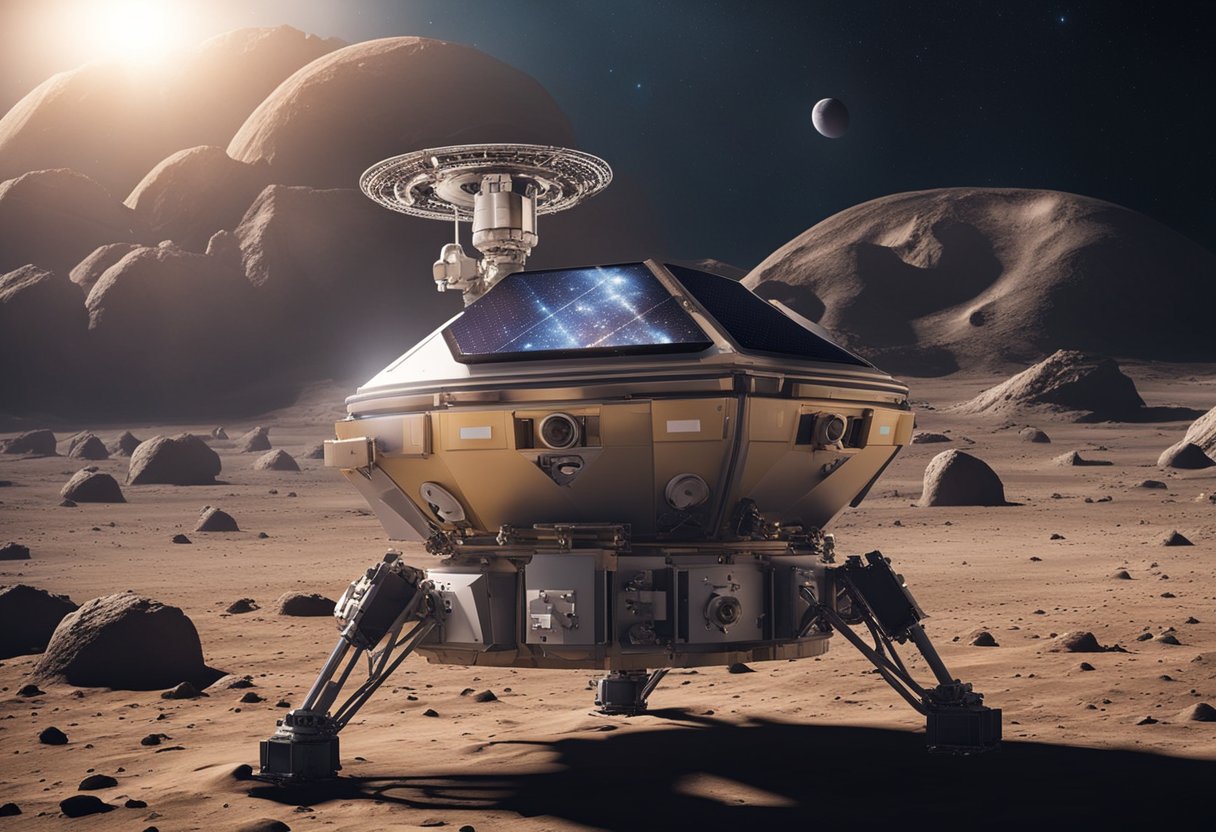
Exploration of our solar system by unmanned spacecraft has continued to deliver significant milestones, from rovers on Mars to probes soaring past the outer planets.
Rover Missions: Our roving explorers have truly transformed our understanding of Mars. The Perseverance rover, landing in 2021, carries instruments to conduct unprecedented scientific investigations, including the search for signs of past microbial life. Its cousin, the Curiosity rover, has been examining the Martian surface since 2012 to understand the planet’s climate and geology.
Landers: In 2018, the InSight lander probed deep into the Martian crust, providing valuable data about Mars’ interior structure and seismic activity.
Jupiter Missions: The largest planet in our solar system and its moons have been subjects of fascination. The Galileo spacecraft provided detailed observations of Jupiter and its major moons in the 1990s, and the ongoing Juno mission continues to unveil Jupiter’s hidden secrets, examining its composition, gravity field, magnetic field, and polar magnetosphere.
Saturn and Titan: Few sights are as breathtaking as Saturn and its complex ring system. The Cassini-Huygens mission offered an in-depth study of Saturn, dropping the Huygens probe onto the surface of Titan, Saturn’s largest moon, revealing its intriguing atmosphere and surface.
Sun Observations: Understanding our star is imperative for space weather forecasting and grasping solar physics. The Advanced Composition Explorer (ACE) plays a critical role in providing real-time solar wind data. Recently launched missions like the Solar Orbiter and the Parker Solar Probe are revolutionising our solar research by observing the Sun’s atmosphere up close.
Mercury Missions: The innermost planet, Mercury, has been visited by the MESSENGER probe, which orbited Mercury between 2011 and 2015, and the BepiColombo mission, in transit, will arrive at Mercury in 2025 to continue our study of its surface and magnetic field.
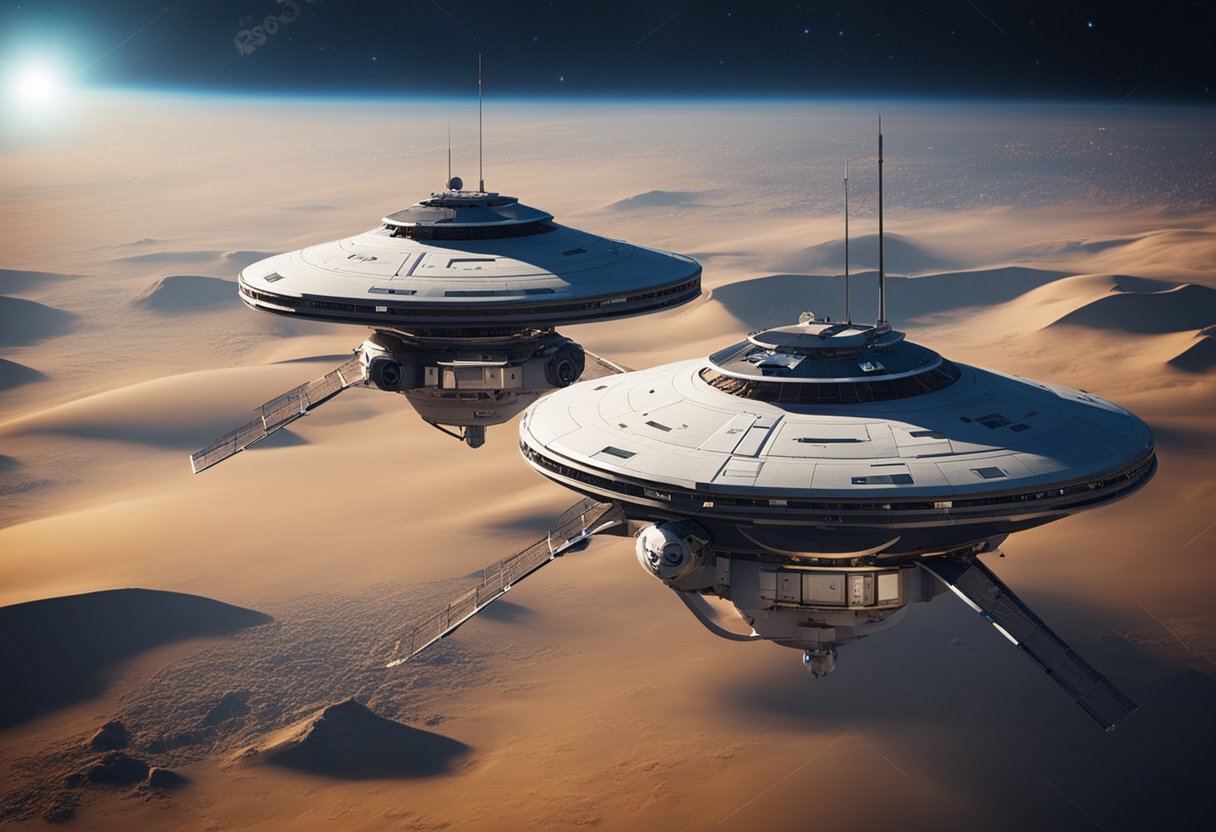
In unpiloted space missions, we’ve gathered an immense wealth of data, altering our understanding of the cosmos. Our instruments have detected water in places never thought possible and commenced a search for life beyond Earth, opening new chapters in the story of our solar system.
Water, a vital ingredient for life, has been discovered across our solar system, revolutionising scientific hypotheses about habitability. On Earth’s Moon, surface ice at the poles hints at an intricate cycle involving the Moon’s thin exosphere. Advancements in spectroscopy facilitated by space missions have confirmed water ice on Europa, a moon of Jupiter, suggesting a subsurface ocean potentially hospitable to life. Similarly, Titan, Saturn’s largest moon, boasts liquid hydrocarbon lakes and rivers, while its Huygens probe discovered evidence of a subsurface ocean of water and ammonia.
Unmanned probes equipped with atmospheric instruments have captured detailed atmospheric data and weather patterns of other planets. The sophisticated balloons and probes we’ve sent to worlds like Venus have transmitted back crucial information on atmospheric composition and dynamics. Understanding the space environment has implications beyond pure science; it’s pivotal in planning future manned missions and protecting satellites in orbit. Weather patterns observed on gas giants like Jupiter and Saturn have challenged our understanding of meteorology on a planetary scale.
The notion of life’s existence beyond our planet has been bolstered by sophisticated space missions aimed at astrobiology research. By probing the chemistry of distant exoplanets, we’ve identified candidates that may possess Earth-like atmospheric conditions. The pioneering work we have done on Europa spotlights a potential habitat in its subsurface oceans, kept warm by tidal forces. The deployment of instruments such as mass spectrometers and gas chromatographs onto these celestial bodies directly supports our quest to find molecular markers of life.
Through these missions, we contribute significantly to the body of knowledge that guides nascent endeavours in space exploration and tourism, such as detailed by SpaceVoyageVentures.com. Our continued commitment to science and exploration propels us toward a future as rich and vast as the universe itself.

Unmanned missions continue to push the boundaries of our knowledge and capabilities in space exploration. In this section, we’ll explore high-profile programs and missions that are setting the stage for future scientific discoveries and advancements in space technology.
NASA’s Artemis programme is leading the charge back to the Moon. This initiative aims to land “the first woman and the next man” on the Moon by 2024, essentially setting the foundation for a sustained human presence by the end of the decade. While the program will see crewed missions, it is also comprised of several uncrewed missions such as Artemis I, which will verify spacecraft systems in a real lunar environment.
Our venture into the asteroid belt is gaining momentum with missions like NASA’s Dawn spacecraft, which has successfully orbited Vesta and Ceres, providing invaluable data about these celestial bodies. Upcoming missions intend to explore more of these remnants from the solar system’s formation, including several Trojan asteroids. This research will enhance our understanding of the early solar system.
Robotic spacecraft such as the Cygnus and the HTV play a crucial role in supplying the International Space Station. Operating in Earth orbit, these uncrewed missions are critical for sustaining astronaut crews, performing scientific experiments, and testing new technologies. The versatility and reliability of robotic spacecraft have proven essential for ongoing operations and the advancement of space travel.
Each mission carries the promise of expanding our capabilities and knowledge, setting the stage for a future that may soon include voyages by companies like SpaceVoyageVentures.com, an early pioneer in documenting and facilitating the next great adventure—space tourism.
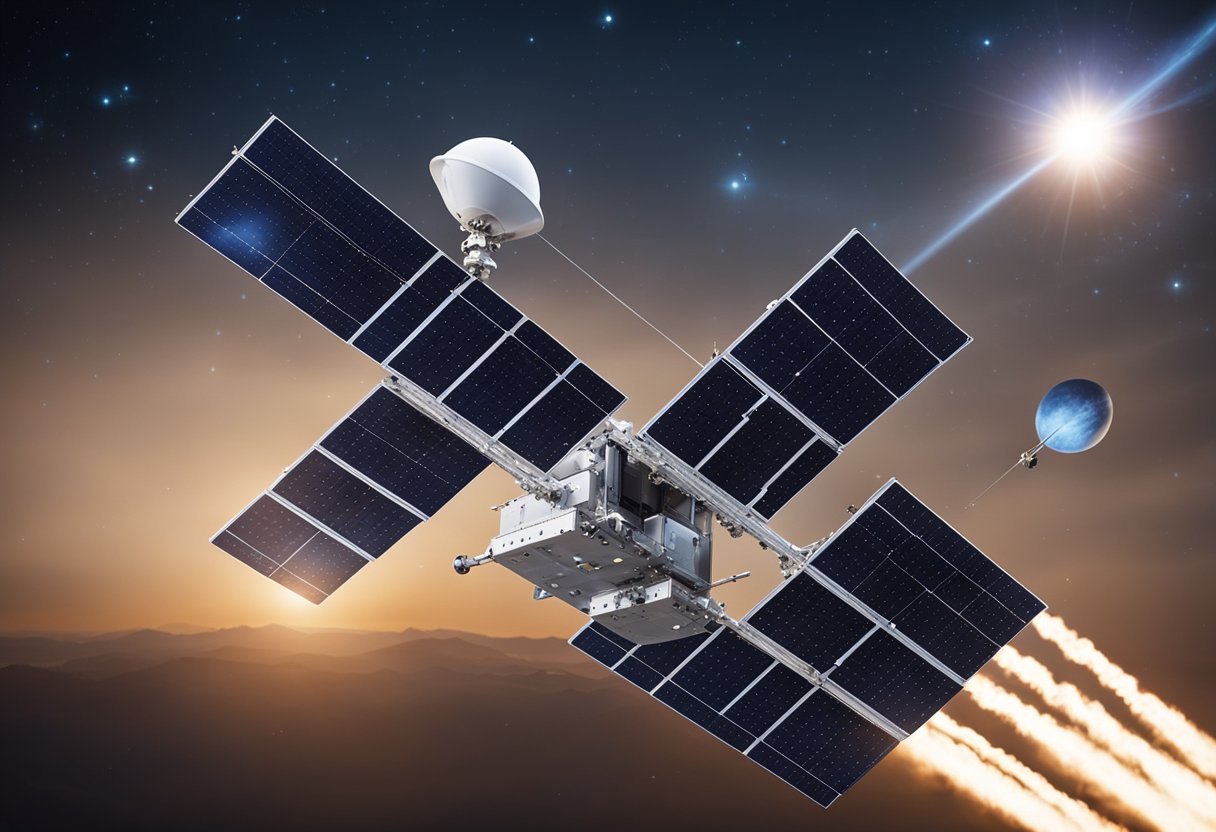
Space exploration has long transcended mere science fiction, with advancements in technology propelling our robotic spacecraft to the far reaches of space. As we push the boundaries of what’s possible, two areas stand out: design innovations and communication improvements.
In the realm of spacecraft design, we are witnessing phenomenal advances enhancing our ability to explore space. Robotic spacecraft, for instance, have evolved considerably, with rovers such as NASA’s Perseverance probing the Martian terrain with unprecedented detail. The lander aspect of these missions is critical, requiring precision engineering to handle planetary touchdowns.
Our orbiters, which are satellites specifically designed to circle other celestial bodies, are equipped with intricate instruments to map and study these environments from space. This data is crucial for missions like sample return, where we aim to bring pieces of other worlds back to Earth for analysis.
We’ve seen the likes of Zarya, the first module of the International Space Station, lay the groundwork for modular space structure design. Meanwhile, facilities like the Tanegashima Space Center in Japan serve as pivotal launch sites for deploying these complex structures into orbit.
List of Notable Spacecraft Design Innovations:
Communication systems in space have undergone transformative upgrades to keep us connected to our distant explorers. With improved signal encoding and the advent of laser communication technology, space probes are able to transmit scientific data over vast interplanetary distances with reduced delay and increased bandwidth.
Developments in satellite technology have benefited Earth as well, allowing satellites to facilitate global communication and improve the accuracy of navigation systems. This robust network is essential for both scientific endeavours and the operational viability of upcoming ventures such as those documented on SpaceVoyageVentures.com.
Communication System Enhancement Overview:
By keeping abreast of these technological advancements, we continue to extend our reach into the cosmos, seeking knowledge, and laying the foundation for the future of space travel and exploration.
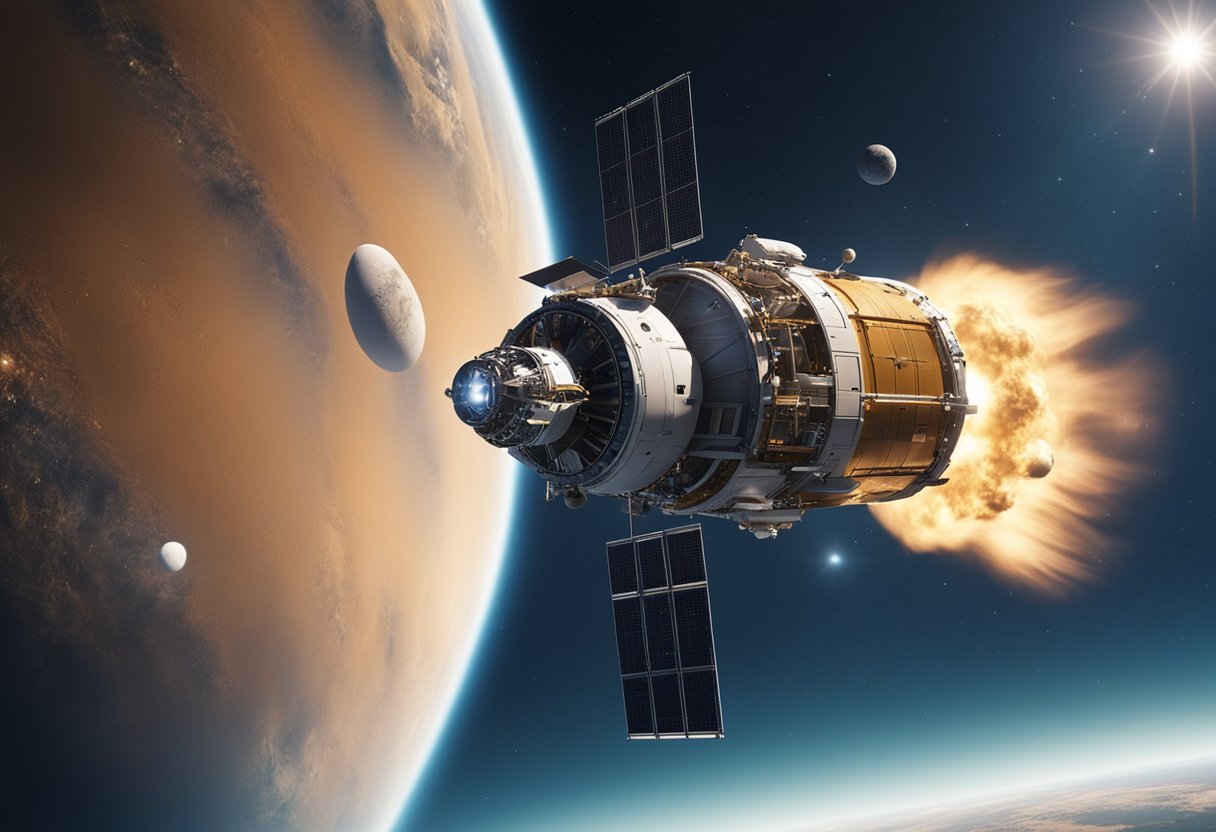
Unmanned missions have proven invaluable in expanding our understanding of space and aiding in the preparation for human spaceflight. Through sophisticated robotics and advanced scientific instruments, these missions contribute significantly to heliophysics, earth science, and our knowledge of the solar system.
Uncrewed missions serve as the vanguard for human spaceflight. By testing environments and technologies, we gather crucial data that inform the safety and design of crewed spacecraft. For example, the Perseverance rover’s mission status plays a vital role in our march towards a sustainable human presence on Mars, testing sample collection and pioneering technology that may soon support astronauts.
Our exploration of the solar system has been revolutionised by uncrewed missions. These missions have travelled to distant worlds, such as Saturn, Uranus, and Neptune, offering glimpses into their complex atmospheres, moons, and ring systems. The science derived from these ventures has reshaped our cosmic perspective and deepened our knowledge of the forces at play in these celestial environments.
Uncrewed missions extend beyond the study of extraterrestrial phenomena. They are also pivotal in advancing Earth science, including the study of our planet’s climate, weather systems, and natural resources. Satellite missions have given us the ability to monitor Earth’s climate patterns and contribute to heliophysics by studying the sun’s influence on our planet.
Unmanned space missions, through their relentless pursuit of knowledge, have become indispensable to our ambition to explore the cosmos and harness its benefits for Earth.
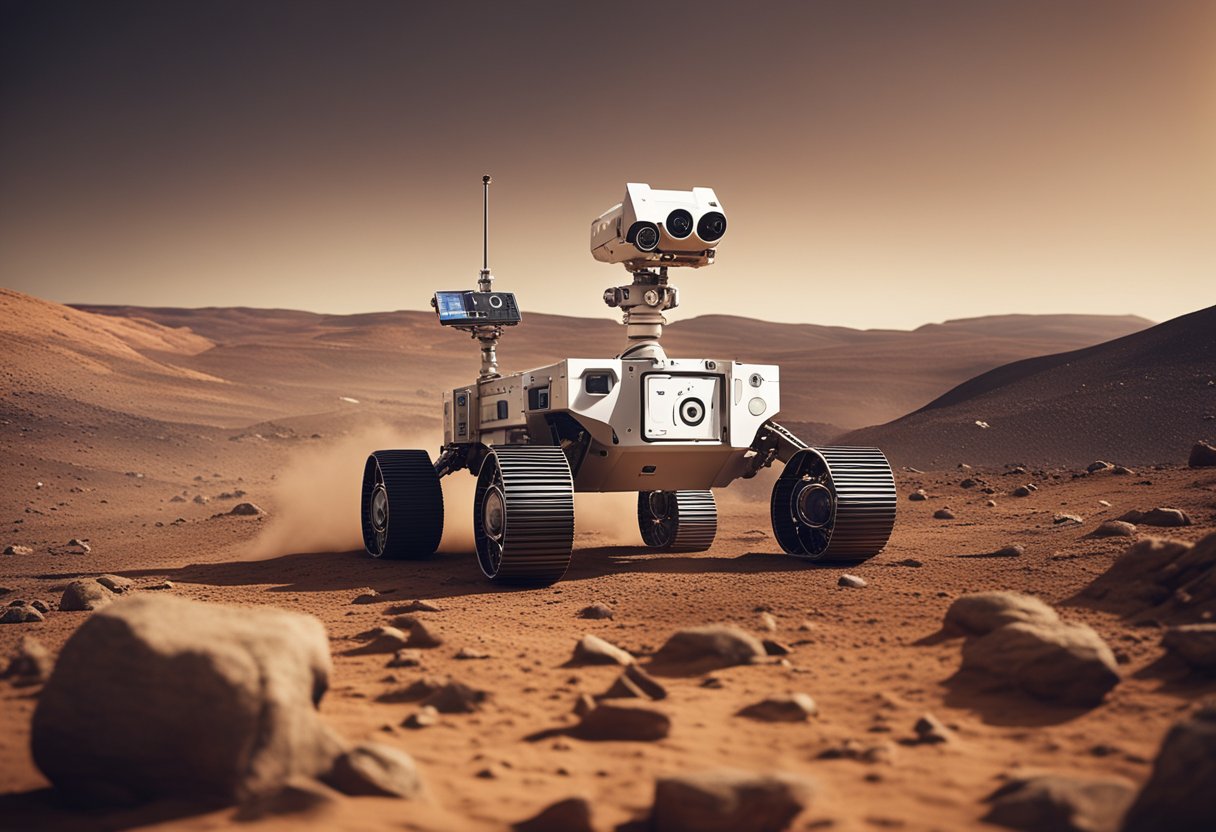
As we explore the realm of unmanned space missions, we must acknowledge the intricate challenges and limitations we face. These issues are not insurmountable, but they require our ongoing attention and innovation.
Space probes and rovers must navigate the vastness of space with precision. When we dispatch these explorers to the outer solar system, or aim to land on the rugged terrain of gas giants like Neptune, our mission status depends on the spacecraft’s ability to autonomously traverse these expansive distances. Earth-based commands are not feasible due to the immense scale of space, requiring effective on-board artificial intelligence and navigation systems.
The space environment poses significant communication challenges. Communication delays are inevitable, as the signals travelling between Earth and a spacecraft can experience time lags, particularly when the mission reaches the outer solar system. This indicates that real-time guidance or troubleshooting is practically impossible. Moreover, the limited bandwidth for data transmission can constrain the amount of scientific data we receive, necessitating highly efficient data compression and prioritisation methods.
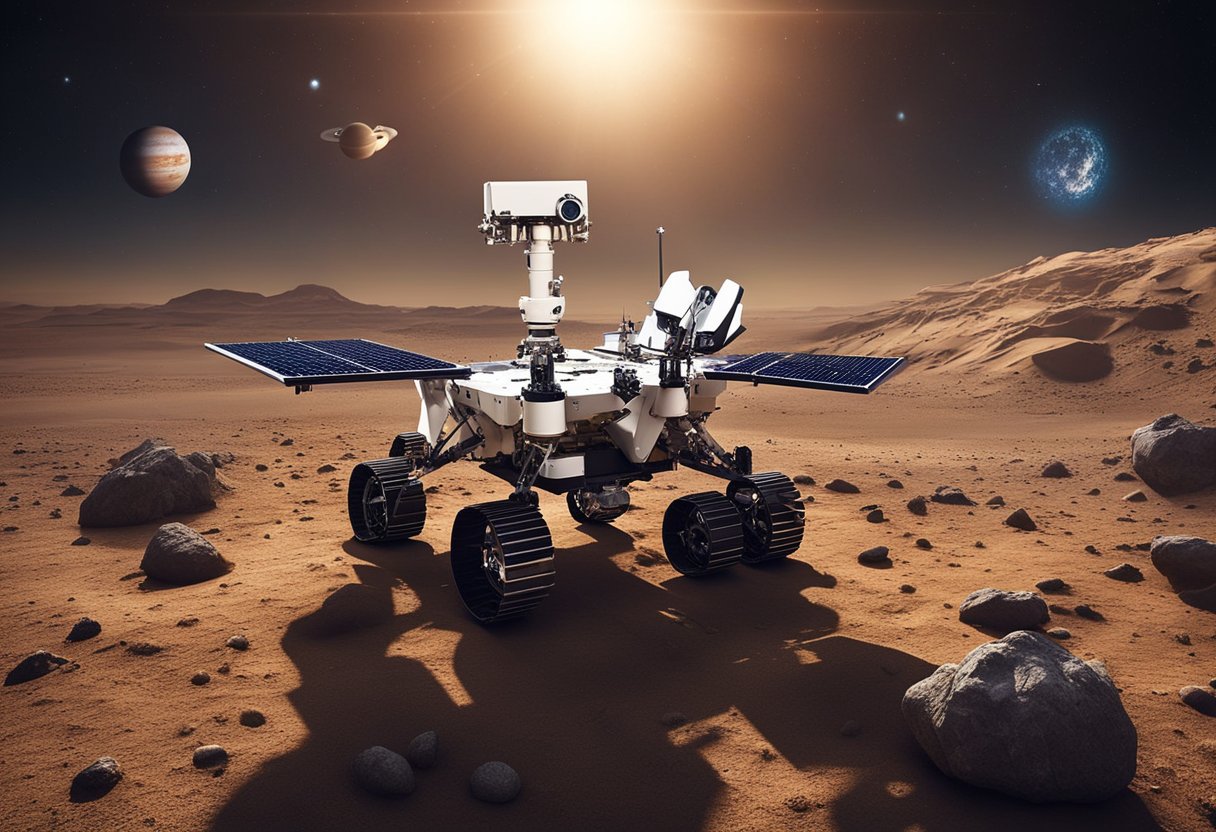
In the realm of space exploration, we are on the cusp of monumental advancements that promise to extend our reach and deepen our understanding of the cosmos through the use of sophisticated uncrewed spacecraft.
Longer mission durations are becoming increasingly feasible due to improved energy sources and more resilient systems aboard robotic spacecraft. The Perseverance rover‘s mission on Mars serves as a prime example, designed to last at least one Martian year (about 687 Earth days). Systems to protect sensitive electronics and mechanisms from the harsh space environment are advancing, enabling these missions to not only survive but also thrive over extended periods.
The concept of sample return missions is at a pivotal point where we can envisage obtaining and delivering extraterrestrial materials back to Earth. The ambitious plans for a Mars sample return involve a series of missions, including the already launched Perseverance rover, which has been equipped with a coring drill that can capture rock and soil samples from the Martian surface.
The frontiers of space robotics are expanding at a remarkable rate. A notable development is the proposed Titan probe, focused on exploring Saturn’s largest moon. Cutting-edge technology will facilitate the probe’s challenges, such as those posed by Titan’s unique chemistry and surface. Similarly, the application of asteroid deflection technology for planetary defence showcases how robotic spacecraft can interface with and alter the trajectory of near-Earth objects.
By continuing to augment our capabilities in these key areas, we can expect a future of space exploration that’s both bold and boundless, achieving unprecedented scientific objectives across our solar system.
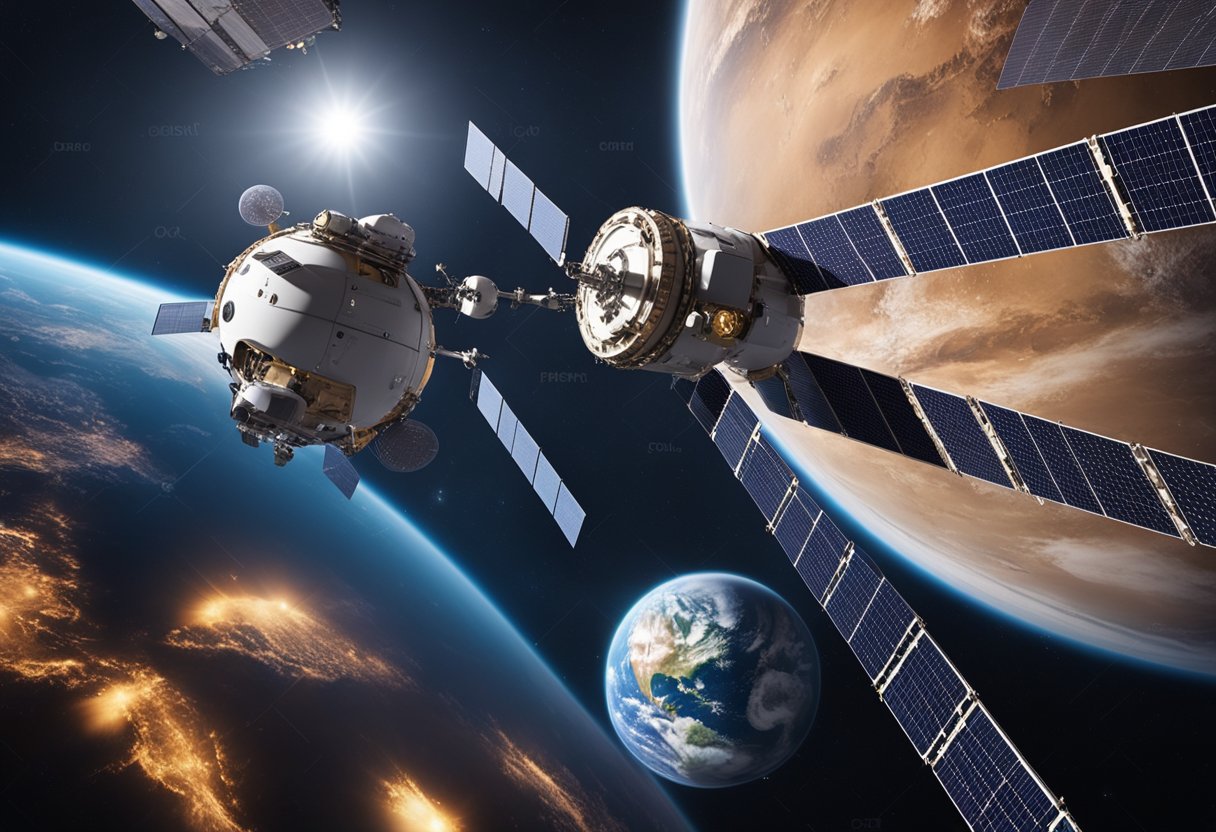
In this section, we address some of the most common inquiries regarding the scope and achievements of unmanned space missions.
The primary objectives of uncrewed space exploration include scientific research, such as studying the Earth’s atmosphere and space weather, as well as exploring other celestial bodies to understand their geology, climate, and potential for hosting life. These missions also test new technologies and collect data to support future human exploration.
NASA’s list of uncrewed spacecraft features pioneering missions like the Voyager probes that have travelled beyond our solar system, the Mars Rovers that have significantly advanced our knowledge of the Red Planet, and the Hubble Space Telescope which has provided invaluable insights into the universe.
Forthcoming space expeditions without crews are expected to further probe the frontiers of our solar system, with missions to icy moons like Jupiter’s Europa to search for signs of life, and to map the surfaces of planets like Mars in greater detail to aid in the preparation for human settlement.
NASA’s cartography of uncrewed missions outlines the trajectories and key scientific achievements of various spacecraft, illustrating the extensive distances covered and the diverse celestial bodies studied, from planets and asteroids to comets and cosmic phenomena.
The Voyager 1 mission currently holds the record for the longest duration in space without a human crew, having been launched in 1977 and still sending back data from the outer reaches of our solar system.
Missions in outer space exploration can be categorised mainly as orbiters, which study celestial bodies from their orbits; landers and rovers, which touch down on surfaces to conduct in situ analysis; flyby missions, which gather data while passing by targets; and telescopes or observatories that remain in space to observe the cosmos without the interference of Earth’s atmosphere.